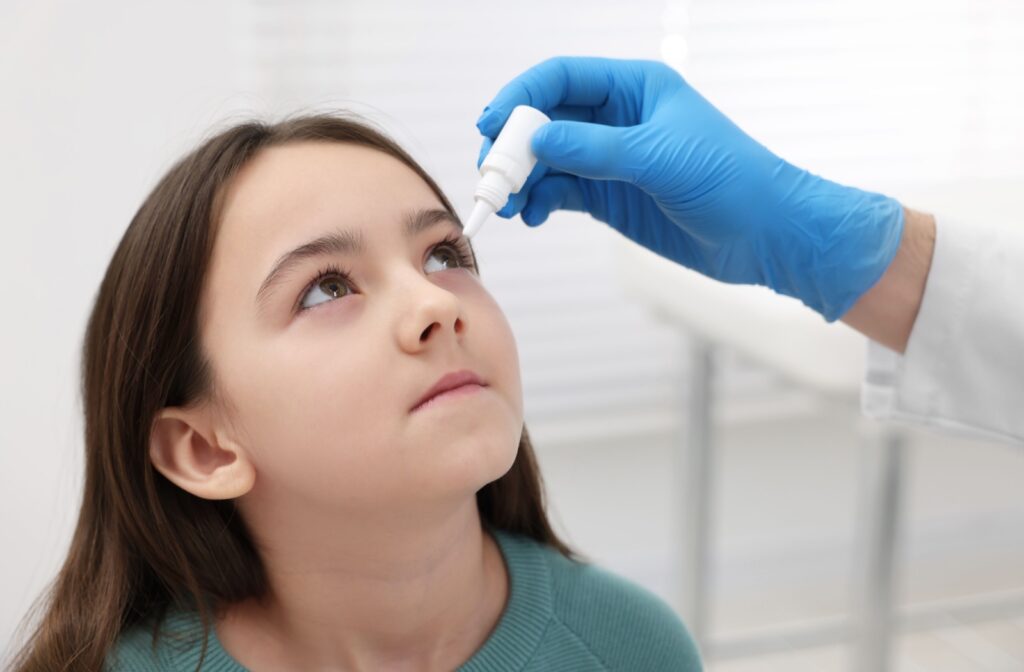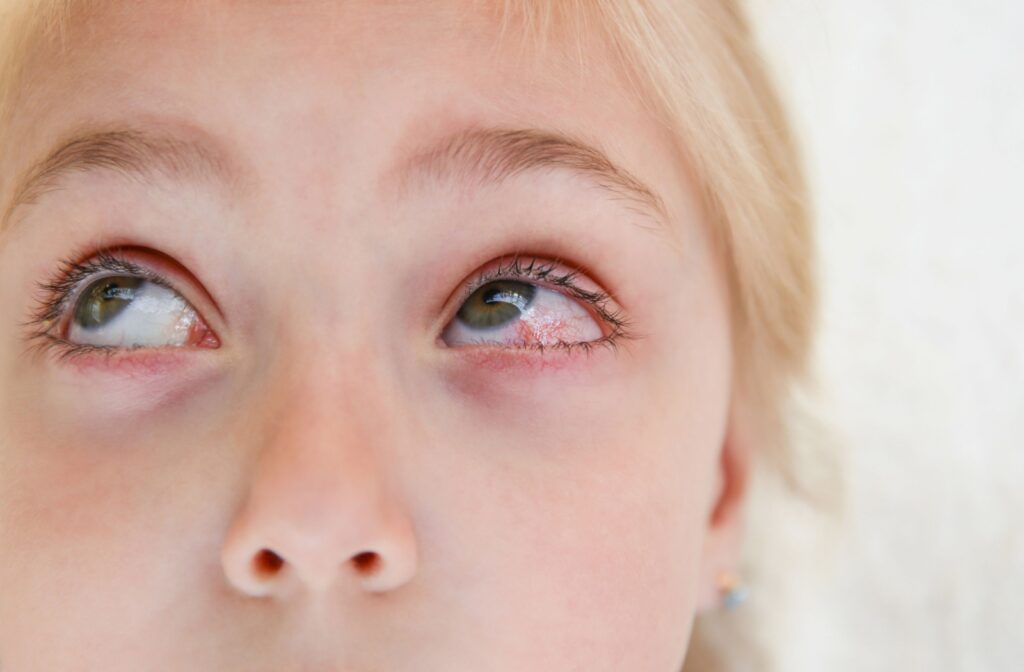It’s easy to panic when your child wakes up with red, irritated eyes. But in many cases, redness isn’t a cause for alarm—it’s a signal. Understanding what that signal means can help you take the right steps, whether that means at-home treatment or seeing a pediatric eye care provider. From mild irritation to contagious infections, red eyes can have a range of causes.
Red eyes in children are most often caused by conjunctivitis (pink eye), allergies, or environmental irritants. Most cases are mild, but signs like discomfort, swelling, or vision changes require professional care.
With that in mind, let’s explore the most common reasons for red eyes in kids, how to treat symptoms at home, and when it’s time to get medical help.
Common Causes of Red Eyes in Children
Conjunctivitis (Pink Eye)
Conjunctivitis is among the most frequent causes of red eyes in children. Inflammation of the conjunctiva, the thin membrane covering the white part of the eye, can stem from several sources:
- Viral conjunctivitis: Most cases of pink eye in children are viral and highly contagious. Symptoms include watery discharge, mild discomfort, and redness that often affects both eyes.
- Bacterial conjunctivitis: Bacterial infections produce thicker, yellowish discharge and may cause the eyelids to stick together, especially after sleep. This type of pink eye requires antibiotic treatment and immediate pediatric eye care.
- Allergic conjunctivitis: Seasonal allergies or exposure to allergens like pet dander can trigger red, itchy eyes. Unlike infectious forms of pink eye, allergic conjunctivitis isn’t contagious and often affects both eyes simultaneously.
Environmental Irritants
Children’s sensitive eyes react quickly to environmental factors, including:
- Dust and pollen during seasonal changes
- Chlorine from swimming pools
- Smoke from cigarettes or fireplaces
- Strong winds or dry air
- Chemical fumes from cleaning products
These irritants cause temporary redness that usually subsides once the child is removed from the offending environment.
Dry Eyes
Though less common in children than adults, dry eyes can cause redness and discomfort. Contributing factors include:
- Excessive screen time
- Air conditioning or heating
- Certain medications
- Autoimmune conditions (rare in children)
Eye Injuries
Minor injuries from rubbing, scratching, or foreign objects can cause significant redness. Even small particles like sand or eyelashes can irritate delicate eye tissues.
Blocked Tear Ducts
Particularly common in infants, blocked tear ducts can cause eye redness, excessive tearing, and discharge. While they often resolve naturally, persistent blockages may require professional intervention.
Home Care & Prevention Strategies

Caring for red eyes at home can make a big difference in your child’s comfort and recovery, while adopting the right habits can help prevent future irritation or infection.
Immediate Care Steps
When your child develops red eyes, these steps can help provide relief:
- Gentle cleaning: Use a clean, damp cloth to remove discharge from the eye area
- Cool compress: Apply a clean, cool compress for 5-10 minutes to reduce inflammation
- Avoid rubbing: Encourage your child not to rub their eyes, as this worsens irritation
- Hand hygiene: Wash hands frequently and ensure your child does the same
Prevention Measures
Protecting your child’s eyes from future episodes of red eye involves:
Environmental Controls
- Use air purifiers during high pollen seasons
- Keep windows closed during peak allergen times
- Ensure proper ventilation in your home
- Consider protective eyewear during outdoor activities
Hygiene Practices
- Teach proper handwashing techniques
- Avoid sharing towels, pillows, or eye makeup
- Replace eye makeup and contact lenses as recommended
- Clean toys and surfaces regularly
Screen Time Management
- Implement the 20-20-20 rule: every 20 minutes, look at something 20 feet away for 20 seconds
- Ensure proper lighting when using devices
- Encourage regular breaks from screens
- Position screens at appropriate distances
With simple daily habits and prompt at-home care, you can help support your child’s comfort and reduce the chances of red eyes returning.
Treatment Options for Children’s Eye Infections
Professional Treatments
Depending on the underlying cause, eye care professionals may recommend:
Antibiotic Treatments
For bacterial conjunctivitis, we typically prescribe topical antibiotics in drop or ointment form. Ointments are often preferred for young children, as they’re easier to apply and remain in contact with the eye longer.
Antiviral Medications
In severe viral cases, antiviral drops may be prescribed, though most viral infections resolve without specific treatment.
Allergy Management
Antihistamine drops or oral medications can help manage allergic conjunctivitis, along with identifying and avoiding triggers.
Home Remedies & Supportive Care
While not replacing professional treatment, these approaches can provide comfort:
- Artificial tears (preservative-free) for dry eye relief
- Warm compresses for blocked tear ducts
- Cold compresses for allergic reactions
- Saline rinses to flush irritants
Book an Eye Exam with Discover Eyecare Today
Red eyes in children are common, but they shouldn’t be ignored. Knowing whether their red eyes are due to an irritant, infection, or something more serious can help you respond with confidence.
Book an appointment with Discover Eyecare to get answers, gentle care, and a clear plan for protecting your child’s vision at every stage of growth.



